
The acid in vinegar can strip shower scrum, kill weeds and cause milk to curdle. The curdling action begins almost immediately, and the more vinegar you use, the more pronounced the results. In some cases, curdled milk is a helpful ingredient in the kitchen. Careful preparation and ingredient selection will ensure your milk curdles only when you want it to.
The Science Behind Curdling
Commercial kitchen vinegar contains acetic acid, typically at a concentration of 5 percent. When the acid in the vinegar comes in contact with the proteins in the milk, the proteins become coagulated. Essentially, the acid cooks the proteins -- a dairy version of scrambled eggs. The proteins mesh together in a tight rubbery mass, causing the liquid to separate.
Good Use
Milk curdled with vinegar is often used as a substitute for buttermilk in baking. curdled milk isn't as thick or creamy as buttermilk, but it offers the same advantages. When buttermilk or curdled milk combine with baking soda in pancakes or cakes, the acid causes the baking soda to fizz vigorously. This fizzing action creates light and fluffy baked goods. The curdled milk also imparts a slight tang to the final product. To curdle milk with vinegar, combine a bit of vinegar with milk in a bowl or measuring cup. Allow the mixture to sit for a few minutes. The milk will thicken and take on a tangy scent. You can also use lemon juice or cream of tartar to curdle milk.
Taste Test
It's one thing to intentionally curdle milk with vinegar, but it's something else altogether when you accidentally create curdled milk. Although curdled milk works well in baked goods, you probably won't appreciate it in sauces or other dishes. Sauces lose their creaminess and become grainy and slightly sour. Consuming these dishes is safe, but far from appetizing.
No Curdling Allowed
To prevent curdled milk, start with a high-fat dairy product. Cream has very little protein and plenty of fat to coat the proteins, so it's the least likely to curdle. Skim milk -- on the other end of the spectrum -- has no fat, but plenty of protein, so it's most vulnerable to curdling. Never boil low-fat milk products, and use care when boiling cream. Like vinegar, high heat causes the proteins to coagulate. Wait to add vinegar until the very last minute to minimize the risk of curdling. Follow the same approach when adding wine or other acidic ingredients. Add a bit of cornstarch to sauces because the starch helps bind the proteins and reduce curdling. Cornstarch can sometimes even fix a sauce that's already curdled.
Related Articles
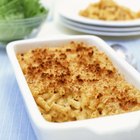
Why Does a Sauce Curdle?
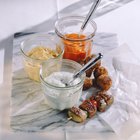
Cooking Yogurt Without Curdling It

What Is Ratio for Cornstarch & Water to ...
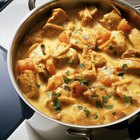
Cooking Yogurt Without Curdling It

Can You Use Milk Instead of Cream for ...

What Does It Mean When Milk Curdles ...

What Makes Homemade Chai Curdle?
How to Use Yogurt or Sour Cream Instead ...

What Makes Cream Liqueur Curdle in ...

What Can I Use to Thicken a Cream Sauce?
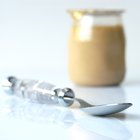
How to Freeze Yogurt Sauce

How to Get Rid of Skunk Smell With ...

A Substitute for Sour Cream in Chicken ...

Why Does Some Alcohol Curdle Cream?

How to Make Penne Vodka With No Heavy ...

How to Reduce the Vinegar Taste in ...

Why Does Milk Curdle When Baking a ...
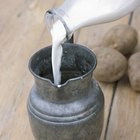
How to Keep Scalloped Potatoes From ...

Why Do Cream Soups Curdle and Turn Sour?

Can You Bake Greek Yogurt?
References
Writer Bio
Julie Christensen is a food writer, caterer, and mom-chef. She's the creator of MarmaladeMom.org, dedicated to family fun and delicious food, and released a book titled "More Than Pot Roast: Fast, Fresh Slow Cooker Recipes."
Photo Credits
Medioimages/Photodisc/Photodisc/Getty Images